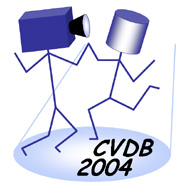
Multimedia databases get larger and larger in our days, and this trend is expected to continue in the future. There are various aspects that affect the demand for efficient database techniques to manage the flood of multimedia data, namely the increasing number of objects, the increasing complexity of objects, and the emergence of new query types. Whereas traditional indexing structures cope with large numbers of simple objects, complex multimedia objects require more sophisticated indexing techniques. In the tutorial, we discuss characteristics of multimedia data and multimedia queries including similarity range queries and k-nearest neighbor queries. The main focus is on efficient processing of k-NN queries in various settings and includes direct k-NN search on indexes, multi-step k-NN query processing for complex distance functions and methods for high-dimensional spaces.
Dr. Thomas Seidl (see his DB&LP entry) is a full professor of Computer Science at RWTH Aachen University, Germany, where he holds a chair for Data Management and Data Exploration since 2002. His research interests include methods for managing and mining large databases of complex objects. Typical applications include spatial, temporal, and multimedia databases in the domains of medical imaging, molecular biology, mechanical engineering, or geographic information systems. Current activities in the data management area address relational indexing techniques to efficiently support multimedia queries in relational database systems.
Dr. Seidl finished his MS in 1992 at the Technische Universitaet Muenchen with a thesis supervised by Prof. Rudolf Bayer, Ph.D., and received his Ph.D. in 1997 from the University of Munich, Germany under supervision of Prof. Dr. Hans-Peter Kriegel. From 2001 to 2002, he held a guest lectureship at the University of Augsburg and a substitute professorship for Databases, Data Mining and Visualization at the University of Constance, respectively.